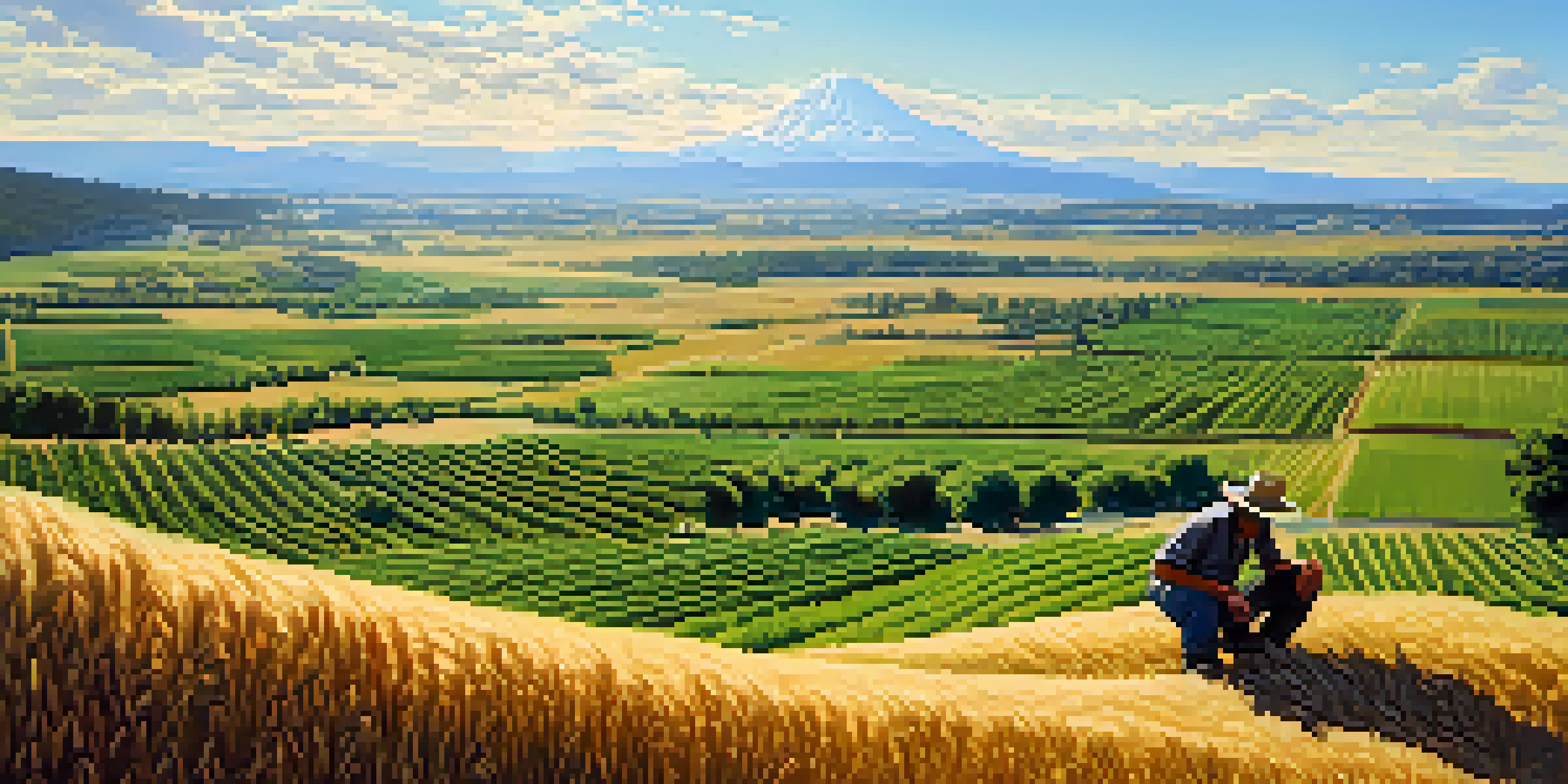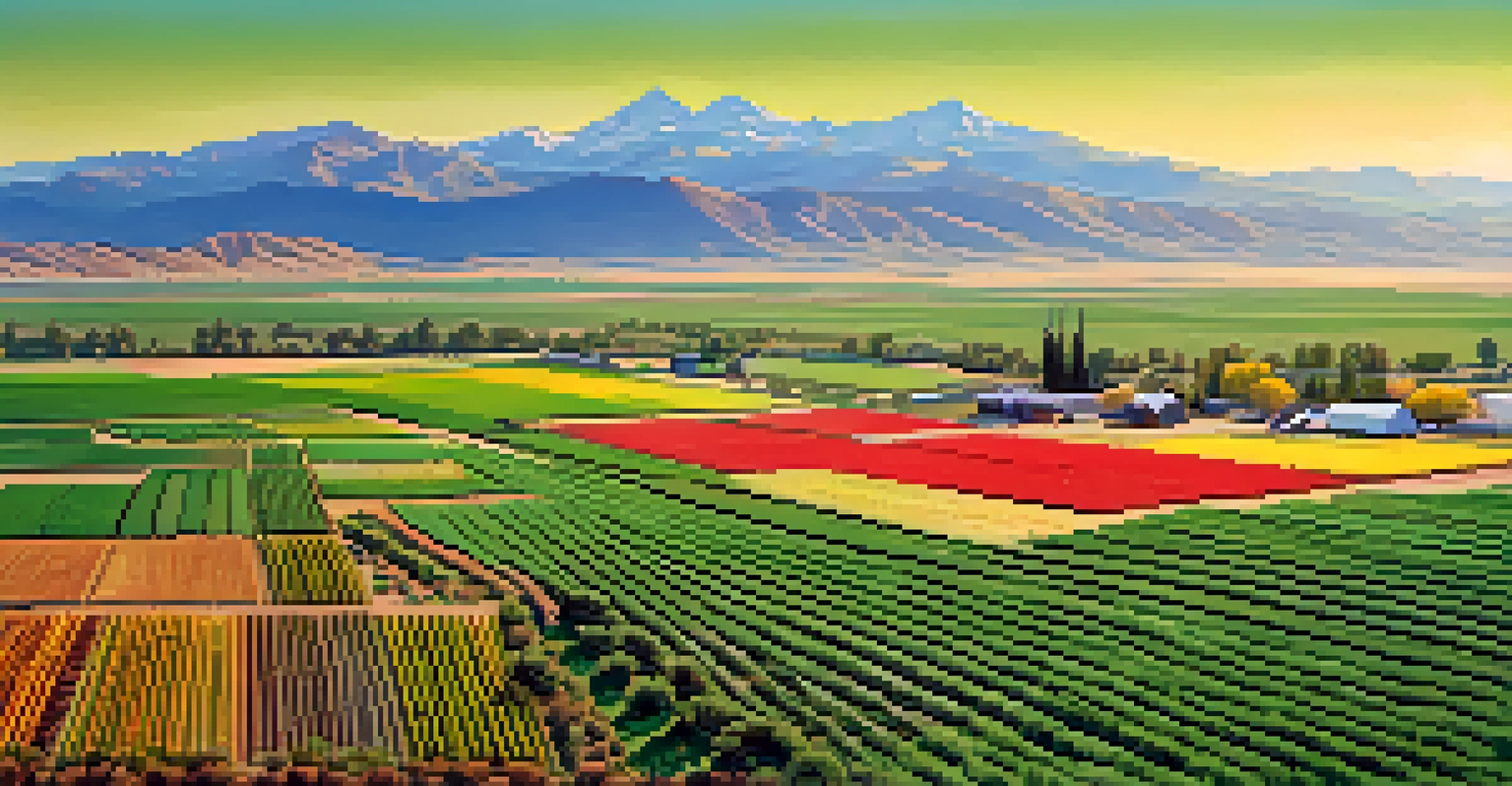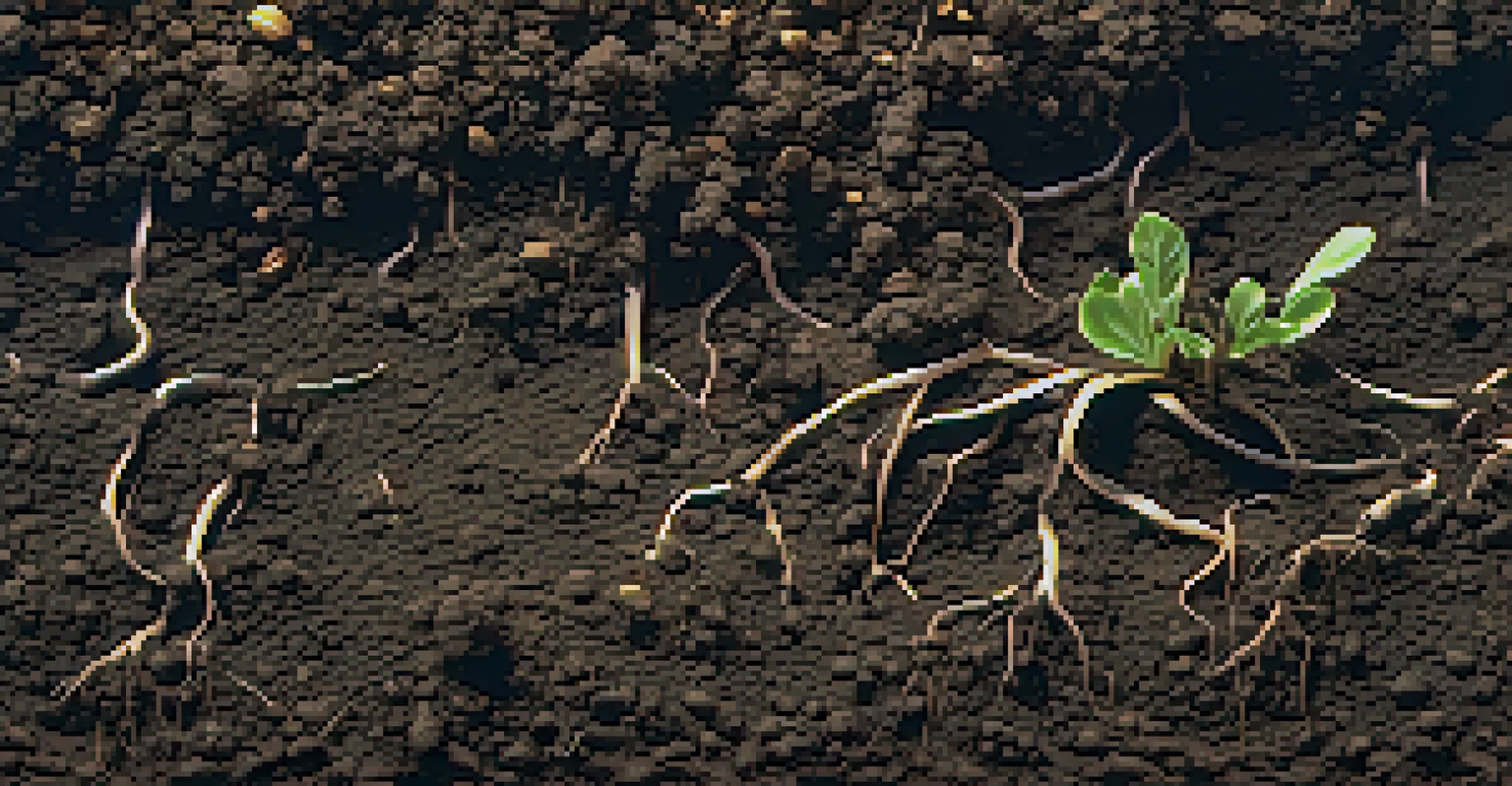Agricultural Adaptation to Climate Zones in Washington State

Understanding Washington's Diverse Climate Zones
Washington State is home to a range of climate zones, from coastal regions to arid deserts. These variations influence not only the weather but also the types of crops that can thrive in each area. For instance, the western part of the state experiences a temperate maritime climate, ideal for growing berries and apples, while the eastern side is characterized by a more arid climate, suitable for wheat and dryland farming.
The farmer is the one who is never satisfied, always striving to improve and innovate, no matter what the climate throws at him.
Farmers must be aware of these differences to make informed decisions about what to plant and when. This means considering factors like rainfall patterns, temperature ranges, and soil types. Understanding these elements is crucial for maximizing crop yields and ensuring sustainable farming practices.
Moreover, climate variations affect pests and diseases as well. For example, warmer temperatures can lead to longer growing seasons but may also increase the risk of pest infestations. Consequently, farmers need to adapt their strategies accordingly, balancing productivity with environmental health.
The Role of Crop Selection in Adaptation Strategies
Choosing the right crops is a fundamental aspect of agricultural adaptation in Washington. For example, farmers in the wetter western regions might favor crops like cherries and hops, which thrive in moist conditions. Conversely, those in the drier eastern areas often grow varieties that are drought-resistant, such as barley or certain legumes.

This tailored approach not only helps in achieving better yields but also supports the local economy. By selecting crops that align with the local climate, farmers contribute to the sustainability of their communities and reduce reliance on imported produce.
Washington's Varied Climate Zones
The diverse climate zones in Washington significantly influence agricultural practices, including crop selection and farming strategies.
Additionally, crop rotation is a strategy that many Washington farmers implement. Rotating crops helps maintain soil health and mitigate the risks associated with pests and diseases, creating a more resilient agricultural system overall.
Innovative Farming Techniques for Climate Adaptation
Washington farmers are increasingly turning to innovative techniques to adapt to changing climate conditions. Practices such as cover cropping, conservation tillage, and integrated pest management are becoming more common. These methods not only enhance soil health but also improve water retention and reduce erosion.
Sustainability is not a destination, but a journey that requires constant adaptation and collaboration.
For instance, cover crops can help fix nitrogen in the soil, making it more fertile for future planting. This is especially important in areas where traditional soil nutrients may be depleted due to intensive farming practices. By implementing such techniques, farmers can create a more sustainable and resilient agricultural environment.
Moreover, technology plays a pivotal role in these adaptations. Precision agriculture tools, like soil moisture sensors and climate monitoring systems, enable farmers to make data-driven decisions. This ensures they can respond effectively to environmental changes.
Water Management: A Critical Factor in Agriculture
Water management is vital for agricultural success in Washington, especially as climate patterns shift. In the eastern part of the state, where rainfall is less predictable, farmers often rely on irrigation systems to ensure their crops receive adequate moisture. This necessitates careful planning and investment in efficient irrigation technologies.
On the other hand, the western regions, which receive more rainfall, need to manage this resource wisely to prevent issues like flooding or soil erosion. Strategies such as rainwater harvesting and constructing swales can help manage excess water effectively.
Soil Health is Essential for Resilience
Maintaining healthy soil through organic practices and reduced tillage is crucial for crop resilience and sustainability in changing climate conditions.
Furthermore, understanding the seasonal changes in water availability is essential for planting schedules. Farmers must adapt their practices based on whether they expect a wetter or drier season, making flexibility a key component of modern agricultural strategies.
The Impact of Soil Health on Crop Resilience
Soil health is a cornerstone of successful farming, especially in the face of climate challenges. Healthy soil promotes robust root systems, which are essential for drought resistance and nutrient absorption. Farmers in Washington are increasingly focusing on soil health through organic amendments and reduced tillage practices.
For example, incorporating compost and natural fertilizers can boost soil microbiota, enhancing its fertility and structure. This not only supports crop growth but also helps in carbon sequestration, contributing positively to the environment.
Additionally, testing soil regularly allows farmers to understand its composition better and make informed adjustments. This proactive approach can lead to increased yields and improved sustainability, making soil health a primary consideration in agricultural adaptation strategies.
The Role of Community and Collaboration in Adaptation
Collaboration among farmers is crucial in adapting to climate challenges. Washington's agricultural community often comes together to share knowledge, resources, and best practices. This can take the form of workshops, farmer cooperatives, or online forums, fostering a sense of solidarity and shared purpose.
By learning from each other's experiences, farmers can identify successful strategies that have worked in similar climate conditions. For instance, a farmer in one region might share innovative irrigation techniques that could benefit others facing similar water management challenges.
Collaboration Strengthens Farming Success
Community collaboration among farmers fosters knowledge sharing and innovation, enhancing the resilience of Washington's agricultural sector.
Moreover, local agricultural extension offices often play a pivotal role in providing research-based guidance and support. This collaboration not only enhances individual farm practices but also strengthens the overall resilience of Washington's agricultural sector.
Future Challenges and Opportunities for Farmers
Looking ahead, Washington farmers face a mix of challenges and opportunities as climate change continues to evolve. While extreme weather events and shifting climate patterns can pose risks, they also present a chance for innovation and adaptation. Farmers who embrace change and are willing to experiment with new methods may find success in unexpected areas.
For instance, the rising interest in sustainable practices and local food systems can drive demand for organic and niche crops. This trend offers farmers the opportunity to diversify their offerings and tap into new markets.

Additionally, advancements in technology and research provide valuable tools for navigating these challenges. By staying informed and adaptable, Washington's agricultural community can not only survive but thrive in an ever-changing climate landscape.